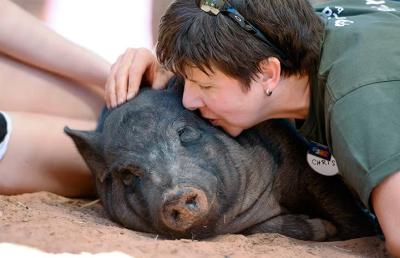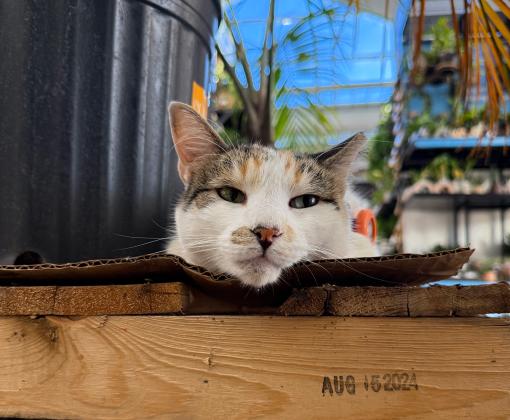
19 fun facts about potbellied pigs
Ever wondered what a potbellied pig loves to eat? And what exactly is a "teacup pig"? The folks at Marshall’s Piggy Paradise — the place where the pigs live at Best Friends Animal Sanctuary — have put together some fun facts about our piggy pals.
- Potbellied pigs are native to Southeast Asia and since the 1980s have been imported into the United States as pets.
- They are highly intelligent and respond well to clicker training. Pigs at the Sanctuary are clicker-trained to walk up and down ramps (helpful for when they need to get into vehicles for traveling), to push balls with their snouts, and to “sit” and touch their noses to a target stick.
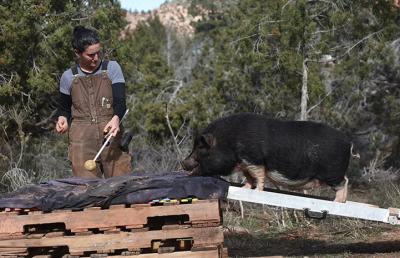
- Pigs have very strong snouts (they can easily push bowling balls) and a keen sense of smell.
- Pigs only sweat a tiny bit at the tip of their noses, not on the rest of their bodies. To keep cool, they love to lounge in the shade and to take mud baths.
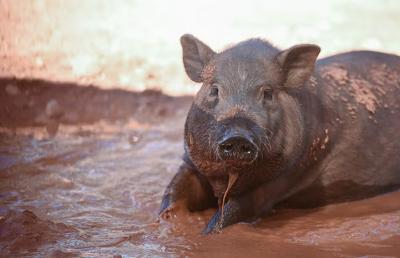
- Though they may not look it after splashing around in the mud on hot summer days, potbellied pigs are very clean.
- Pigs are social animals, and community is crucial to their happiness and well-being. Living with other pigs also helps them form appropriate boundaries and better relationships with humans. At Marshall’s Piggy Paradise, pigs live together in a group commonly called a “sounder.”
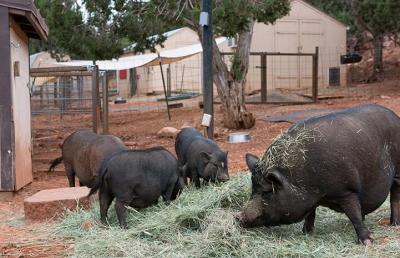
- Despite advertisements by breeders or websites, the concept of teacup pigs or mini pigs is a myth. These ultra-tiny pigs go by many names, but they are all the same species: potbellied pigs. Most healthy adult potbellied pigs weigh between 120 and 180 pounds.
- When pigs pack on too many pounds, fat rolls may cover their eyes and cause mechanical blindness. Appropriate diet and exercise help them lose the excess weight and see the world again.
- The tusks of male pigs continue to grow throughout their lives and must be trimmed by a veterinarian. Pigs’ hooves must also be trimmed a few times a year, unless they are active enough to wear them down naturally.

See how your community is doing
- Besides tusk and hoof care, pigs need routine dental care and wellness checks to keep them looking and feeling their best. An on-site clinic at Marshall’s Piggy Paradise provides these “spa” services for the Sanctuary’s pigs.
- Pigs have bristles (not hair or fur) that they shed once a year, though some pigs shed their bristles twice a year.
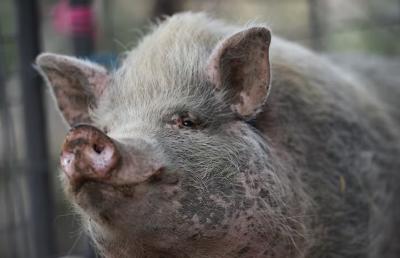
- On average, pigs live about 15-18 years, though some have lived to about 20 years old.
- Pigs are opportunistic omnivores, which means they’ll eat pretty much anything given the opportunity; however, they do very well on a vegetarian diet. At Marshall’s Piggy Paradise, pigs eat a vegetarian low-sugar, high-fiber diet. While high-quality pig pellets are a foundation of that diet, the pigs also are fed fresh romaine lettuce, peas, carrots, lima beans, green beans, and seasonal treats, such as watermelon, zucchini, and pumpkin. Fig cookies are also a favorite treat for most potbellied pigs.
- Pigs can breed when they are as young as 4 to 6 months old, but at the Sanctuary they are spayed or neutered at about 6 months old.
- Potbellied pigs were originally solid black in color, but now it’s common to see pink, white, and spotted pigs. White and pink pigs are susceptible to sunburn and must be protected from the sun, especially here in the desert of southern Utah.
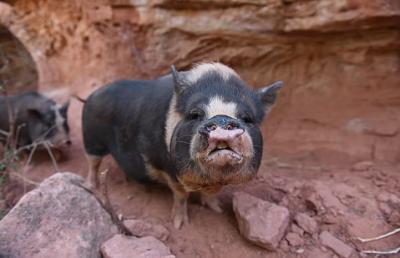
- Pigs need appropriate year-round shelter. At the Sanctuary, they have access to cozy pig houses that keep them dry and comfortable in every season. Some houses have heat and air conditioning, while others are packed full of hay for nesting.
- Pigs constantly communicate with each other using an extensive vocabulary with distinct meanings. Mother pigs “sing” to their babies when they nurse. Piglets learn to recognize their mother’s voice and will run to her when she calls.
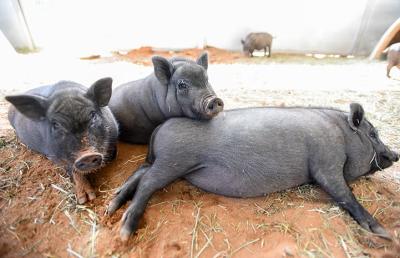
- Pigs form close bonds with people, and they can be very affectionate and playful. Each pig has a unique personality, but many at the Sanctuary share a love of belly rubs and massages.
- Potbellied pigs can make awesome pets for people who adopt them with the right expectations and provide them with the right setup.
